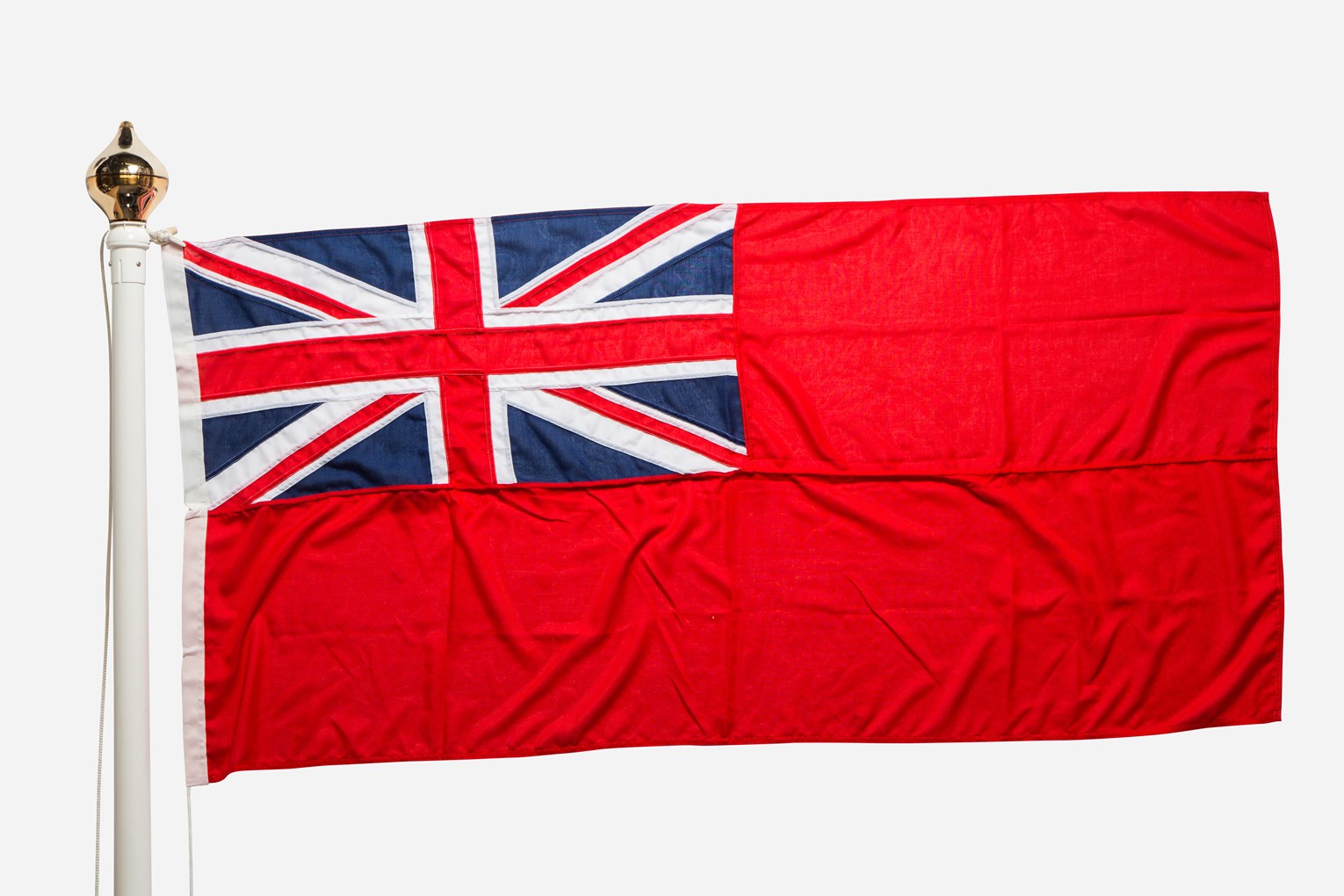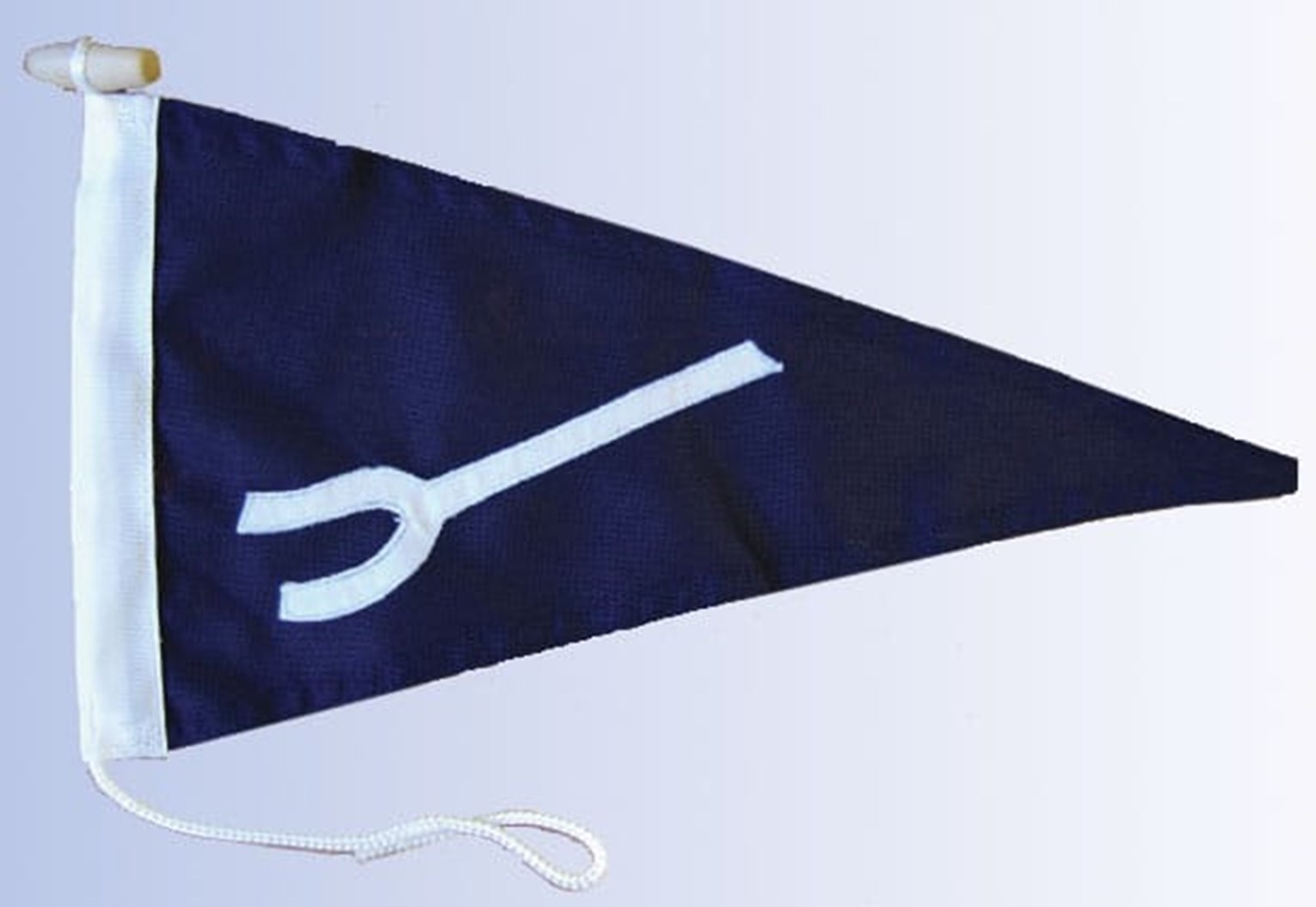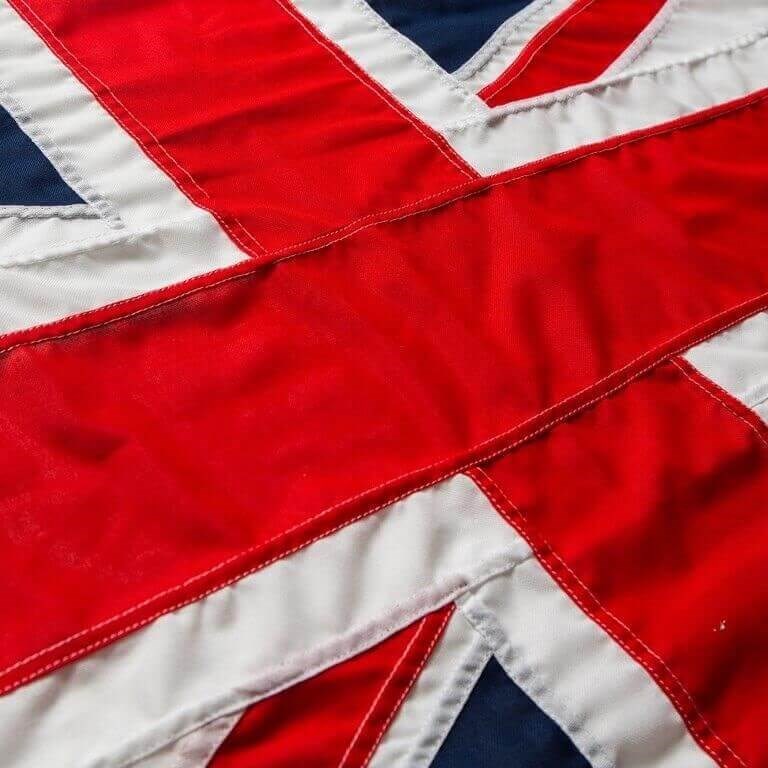Flag etiquette is considered a combination of law, good manners and tradition. At sea, flags also send a message and give an awareness to other vessels, making them a vital tool in safety at sea. These include:
- Special or Privileged Ensigns
- What flag to put where
- Land flags
- Sizing your flags
So, what flags can you fly on a boat? When sailing a boat, you need to clearly display your ensign flag, a courtesy flag, your national flag, and your burgee flag. These clearly display to close-range ships where you’re from, what organisation you’re from, and any signals to the other boats.
It is a legal requirement for a UK flagged vessel to fly an ensign. This is a requirement as per the Merchant Shipping Act, in particular applied to entering or leaving foreign ports. In these cases, the correct flag is a standard Red Ensign which is the UK national maritime flag. The flying of this Ensign denotes the nationality of the vessel and should be flown at all times if possible.
We’ve created this short guide for you to explore that answers all your questions about boat flag etiquette. Simply keep reading to learn more.
What flags can you fly on a boat?
When sailing a boat, ship or yacht, knowing what flags you need to have onboard is essential. On all vessels, you should possess and fly your ensign flag, your house flag, your burgee flags and any courtesy flags that you need. We’ve explained what each one means below.
The Ensign
The ensign is the most important flag to display on your ship or boat. It is your national flag, which represents which nation you’re from and is the largest flag on your boat. This is important because the boat and the crew will follow the laws applied for their nation, and it conveys this message to others. The ensign lives on the stern (rear) of the boat, and has a correct order of positioning throughout the day. This order is: masthead, starboard spreader, and finally port spreader.
There are different types of ensign flags, such as civil, naval or yacht. Each has its own meaning, and reflects the purpose of the boat. For example, a naval ensign shows that the vessel is a warship, while the civil one indicates that it’s a merchant ship.


Special or Privileged Ensigns
In addition to the Red Ensign, there is a White Ensign, a Blue and Light Blue Ensign, with some designs featuring badges too. These ensigns are considered ‘special’ or privileged and should only be flown with special permission which is ultimately granted by His Majesty The King.
If you are fortunate enough to be granted the appropriate permissions to fly one of these special ensigns you must fly them in accordance with the issued warrant. These warrants often require the corresponding burgee to be displayed alongside the flag.
In most cases these warrants are granted to Yacht Clubs which, in turn, gives members the appropriate permission to fly the Ensign under the conditions of the club’s warrant. This process usually begins with clubs issuing their members a permit.
What is a Burgee?
A burgee is a flag that identifies the organisation you are from, and is usually found on yachts. For example, if you are a member of a specific sailing club, then you must fly a burgee flag on your boat. They are usually flown on the main masthead of the vessel, and clearly display the organisation's logo or emblem.
What is a House Flag?
A house flag is similar to a burgee in that they are a smaller version of the organisation’s emblem or logo. They are typically flown on the port halyard, which is usually reserved for flags of this nature. The house flag should not be flown above the burgee.
Understanding House Flags
House flags are flown from the port spreaders. A house flag may indicate membership of an association or society, or may be flown to indicate membership of another club. More than one house flag may be flown on the port halyard, however, it is important to be aware of their order of seniority.

Land flags
Land flags, otherwise known as national flags. The Union flag, Welsh Dragon and the Crosses of St Andrew, St George and St Patrick are primarily land flags and should not be flown at sea. It’s important to remember that land flags can look like some signal flags and may cause confusion in this environment.
At sea the cross of St George is the flag of an Admiral and it should therefore not be flown by anyone else, without special dispensation, whilst a vessel flying the St Andrew’s Cross could be mistaken as saying “my vessel is stopped and making no way through the water”; this is the meaning of code flag M which has the same design. The St Patrick’s Cross could be misinterpreted as code flag V, “I require assistance”.
What Size Flags Should You Have on a Boat?
The sizes and condition of flags are important. They should never be tatty and should not hang too close to or in the water – whilst still being large enough to be seen. The best advice we can give is ‘whatever looks right’ as every situation and vessel presents a different challenge. See sizing information below for more details, as outlined by the Royal Yacht Association.
|
Flag Type |
21-26 ft Vessels |
27-34 ft Vessels |
35-42 ft Vessels |
43-50 ft Vessels |
51-60+ ft Vessels |
|
Ensign |
¾ Yard |
1 Yard |
11/4 Yard |
11/2 Yard |
1 and ¾ Yard |
|
Burgee |
15 inches |
15 inches |
18 inches |
18 inches |
50 inches |
|
Courtesy |
12 inches |
15 inches |
18 inches |
22 inches |
30 inches |
|
House Flags |
10 inches |
12 inches |
15 inches |
18 inches |
22 inches |
Where Should Your Boat Flags be Placed?
Please be mindful of the fact that flying incorrect or inappropriate flags could lead to insult, either at home or abroad, by giving a signal you do not intend to give, or could lead you to a fine for breaking the law. The correct positioning and flying of a Vessel’s flags gives a clear signal to others which could prove critical in some situations.
Ensigns - The Ensign should be flown as close to the stern of the vessel as possible, in the most senior position for any flag. In the case of a UK registered vessel, this would be the national maritime flag, otherwise known as the Red Ensign (unless entitled to wear a special or privileged Ensign.)
Special or Privileged Ensign - Worn in accordance with the warrant and permit governing the flag’s use. If the warrant and permit requires, the corresponding burgee may also have to be flown in accompaniment.
Burgees - The burgee takes the second most senior position on the vessel, which is normally the main masthead. Only one burgee may be flown on any vessel and no other flag should be flown above the burgee on the same halyard (flagpole rope).
Courtesy Flags and Q Flags - The starboard spreaders are used for signalling. This is where both a national courtesy flag and the Q flag should be flown. Important note: you should not fly any other flag above a national courtesy flag on the same halyard.
Purchasing your Boat and Ensign Flags with Flagmakers
For high quality flags for your yachts, boats or ships, we’re here to help. We’re the UK’s leading manufacturer of bespoke, premium flags for any purpose. For your maritime flag enquiries, simply visit our nautical flags page for information, or get in touch with one of our experienced team members to learn more.





